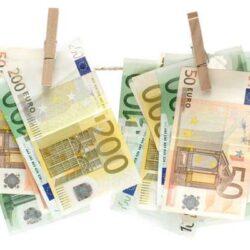Wine appreciation is a delightful journey that allows us to explore the rich and complex world of wines. In this comprehensive guide, we will delve into the art of wine evaluation, breaking it down into three key components: visual examination, the all-important snippy sniff, and the intricate process of tasting. Whether you’re a novice wine enthusiast or a seasoned connoisseur, mastering these techniques will enhance your wine-tasting experience and help you discover hidden nuances in every glass.

Visual Examination: Setting the Stage for Wine Evaluation
Before you take your first sip, it’s essential to start with the visual examination of the wine. The color and appearance can offer valuable insights into what to expect from the wine. As Gary Vaynerchuk suggests, it’s not just about sipping; it’s about building anticipation.
The Snippy Sniff: Unlocking the Aromas of Wine
The snippy sniff, often underrated, plays a crucial role in wine evaluation. It’s all about bringing the aromas to the surface. Oxygen, as Gary emphasizes, is your friend in this process. By swirling and inhaling deeply, you’re not only picking up on flavors but also priming your palate. This step significantly enhances your ability to taste the wine more profoundly.
Tasting: Exploring the Complexities of Wine
Tasting wine is where the magic happens. While we all drink wine, evaluating it involves a more nuanced approach. Swishing wine in your mouth, almost like using mouthwash, allows you to detect various flavors on different parts of your tongue. This process can reveal acidity, sweetness, and other distinctive characteristics. It’s an exciting exploration of the wine’s complexity.
Terminology 101: Understanding Wine Jargon
As you progress in your wine journey, you’ll encounter wine terminology that may seem daunting at first. Here’s a quick overview of some key terms to get you started:
Vintage: The year a wine is made, which can impact its characteristics.
Acidity: Similar to the sharpness of seltzer, acidity is a crucial aspect of a wine’s flavor profile.
Tannin: The bitterness often associated with red wines, which can evolve into a desirable characteristic.
Minerality: A flavor profile influenced by the taste of rocks and soil, providing unique nuances in certain wines.
Oak: The woodiness and smokiness imparted by oak aging, which is essential in some popular wine varietals.
Structure and Finish: Assessing the Complete Package
Evaluating the structure of a wine involves considering how it’s put together, from the initial flavors to the mid-palate and the finish. The finish, as Gary emphasizes, is the last lingering flavor on your palate. It’s a crucial indicator of a wine’s quality, with a longer finish often denoting a superior wine.
Conclusion: Elevating Your Wine-Tasting Experience
In the world of wine, evaluation is not about being a snob but about enhancing your enjoyment. By applying the techniques described in this guide, you can become a more discerning wine enthusiast. Remember, wine tasting is a journey, and the more you explore, the more you’ll discover the fascinating world of wine. So, swirl, sniff, and savor every drop.





